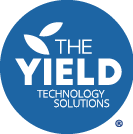Overview
How on-farm artificial intelligence can help horticulture supply chains
Press release
Posted on November 29, 2022
Original article published in The Land, 26 November 2022.
National Agriculture Day put the spotlight on innovation in the sector and as Food Agility CRC’s AI and Robotics Pillar lead, Ashley Rootsey writes, digital tools are helping farmers manage production with greater insight and confidence.
Has there ever been a more turbulent time for horticulture supply chains than the last two and a half years?
At times there’s been shortages of berries on supermarket shelves, we’ve been urged to eat more avocados when producers couldn’t move them quick enough and who can forget the highly publicised lettuce shortage of 2022?
Prolonged La Nina rainfall and extreme flooding events continue to impact crops in East Coast growing regions, both in terms of production and transport.
Less stock means higher prices. Furthermore, volatile commodity prices and dramatically inflated costs of core inputs like fuel, fertiliser, and chemicals, has made planning on-farm production much harder.
Food Agility CRC and its partners are investing more than $5 million in a range of projects through the AI and Robotics Pillar, to develop technologies critical in helping businesses manage some of these challenges.
While you certainly can’t control the weather, what we’re finding is that technology can unlock previously hidden avenues for productivity gains and efficiency in farming systems, along with improved prospects for key issues such as sustainability and animal welfare in farming management.
Let’s focus on artificial intelligence (AI), where one of the most common applications in agriculture is in machine learning (ML).
ML draws on modern computing power to process and analyse multi-dimensional data in new ways. This may create opportunities to use farming data for significant benefits in the way producers plan and manage their operations.
Food Agility projects are examining how information like climate and weather records, remote sensing data from satellites, real-time animal monitoring tags, and records of farm management practices can be combined to generate both accurate historical analysis and increasingly accurate future predictions of farm yields and performance.
In this research, we’re partnering with technology providers, both Australian and large multinationals, which already have hardware operating in the field.

(Image of Green Atlas Cartographer supplied by Agriculture Victoria).
We’re bringing them together with industry to find solutions to real-world challenges, fill gaps in technology and explore opportunities to leverage more value.
For example, Food Agility is working with The Yield Technology Solutions, Yamaha, UTS and Treasury Wine Estates in a project combining robotics and micro-climate weather services to improve the accuracy of wine grap harvest predictions. This will benefit decision making both on and off-farm, contributing to a more efficient and sustainable wine sector.
It’s important to note is that while individual technology can add some benefit, typically we see the real power of AI and ML revealed once we combine farming datasets.
Along with the functional challenges posed by collating data from multiple sources, there are also important technical barriers such as issues in regional connectivity, data ownership, and data standards and interoperability, which Food Agility is looking to address in other projects and related initiatives.

The development of this technology is not without its challenges. The biological and ecological complexities of food production systems mean that there is still a long way to go before we can generate tools with the prescience of a crystal ball.
However, we’re already finding value being unlocked for producers and processors, particularly in planning farm operations and labour, scheduling of post-farm logistics and improved financial forecasting for agribusinesses.
Data is the lifeblood for AI, and we see that members of our industry are at different stages of their digitalisation roadmaps, so for those looking to start the journey towards AI-powered farming, a great first step is to identify the key inputs, processes and outputs of your farming business.
Then for each of those, take stock of what data you are currently collecting, where this data is stored, if it can be easily accessed electronically, and if there are any key gaps.
Those gaps could be plugged by investing into new sensors and data loggers to make sure key inputs and outputs are being captured digitally. It will also be useful to think about the level of resolution that your data should be at, to be useful for you and your business.
For example, if you’re a horticultural grower thinking about using AI for harvest yield predictions in the future, a key enabler will be having a solid record of previous yields at the level of granularity you wish to predict at, such as per hectare, per block, site or regional/national levels for commercial growers.
An upfront investment in equipment that helps record inputs and accurate yield tonnage volumes at harvest is an essential starting point.
As more digital tools are implemented on farm, data can unlock more pieces of the farming system puzzle. This will allow farmers to manage their production with greater insight and confidence in decision making.
It’s exciting to see how data and information technology systems can contribute to more resilient food and agricultural systems for the future.

Ashley Rootsey leads the horticulture robotics and AI pillar at Food Agility CRC and is a graduate of the University of Sydney’s Bachelor of Food Science and Agribusiness (Hons) program. He also works with The Yield on the AI in viticulture project.
Most recent

In the news
April 4, 2024
How these top companies are using AI every day

Press release
December 13, 2023
AgTech Trends 2023 Survey: Agriculture Industry Demand Rising Sharply for AI, Automation and Advanced Data Analytics

Press release
December 13, 2023
